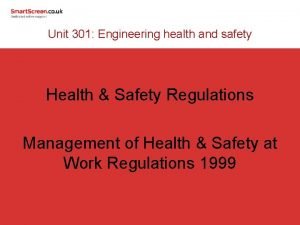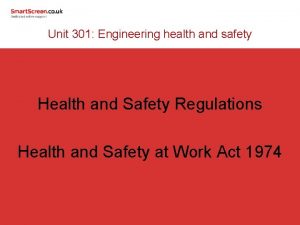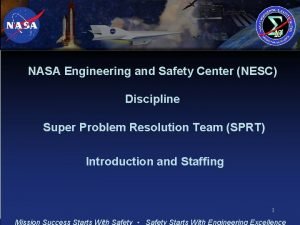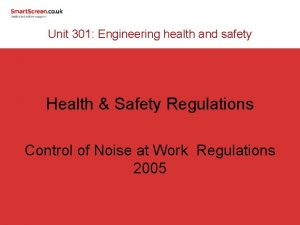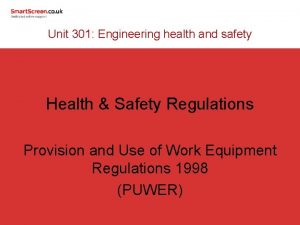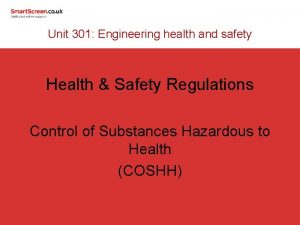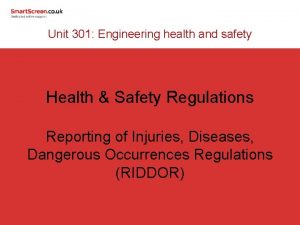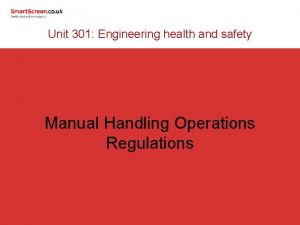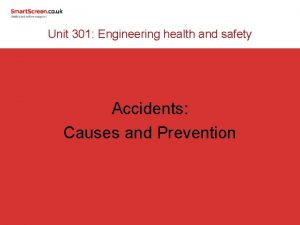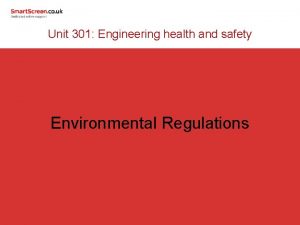Unit 301 Engineering health and safety Health Safety












- Slides: 12

Unit 301: Engineering health and safety Health & Safety Regulations Personal Protective Equipment Regulations 1992 (PPE)

PPE Regulations 1992 • All equipment which is intended to be worn by a person at work to protect them against risks to their health and safety. • PPE should always be the last option. • Use PPE when risk can’t be controlled by other means. • Training: – User aware of why PPE is required – When to use it – How to use it

Consultation • Employers are legally obliged to consult with employees, or their representatives, on health and safety issues. • Consultation with those employees who do the work and wear the PPE is crucial to ensure the correct equipment is selected

Requirements The regulations require that PPE is: • • • assessed prior to use to ensure fitness for purpose maintained and properly stored provided with instructs to ensure correct used correctly by employees supplied free of charge.

Risk Assessment • Risk assessment is a key process in deciding upon the correct risk reduction strategy • If no other method can reduce risks, PPE should be considered • Selection should also consider the operators who have to use the PPE

Eye Protection Hazards – Chemical splashes – Arc radiation – Sparks – Gas and vapour PPE – Safety spectacles – Goggles – Visors

Head Protection Hazards – Falling objects – Head bumping – Hair entanglement PPE – Helmets – Hard hats – Bump caps

Breathing Protection Hazards – – Oxygen-deficient atmospheres Dust Vapour Gas PPE – – Disposable filters Respirators Air fed helmets Breathing apparatus

Body Protection Hazards – – – Extreme temperatures Bad weather Chemical contact Impact Cuts and abrasions PPE – Overalls – Jackets – High visibility clothing

Hand Arm Protection Hazards – – – Abrasion Cuts Chemical contact Electric shock Skin infection PPE – – Gloves Gauntlets Wrist cuffs Armlets

Feet and Leg Protection Hazards – – Cuts Slipping Falling objects Chemical contact PPE – – Safety boots Gaiters Leggings Spats

Any questions?
